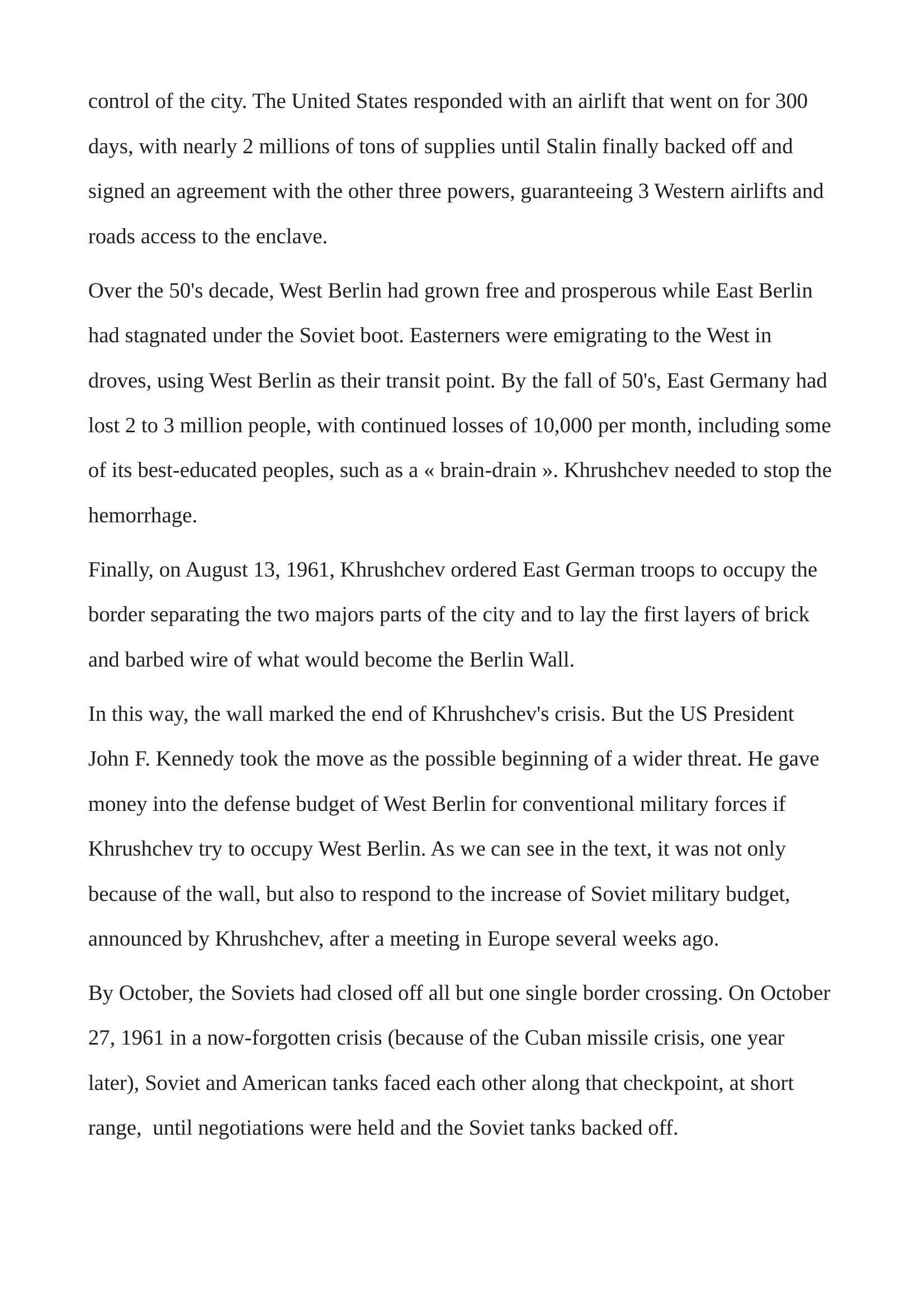Berlin, a crucial issue for the USA during the Cold War
Publié le 18/01/2016

Extrait du document
«
control of the city.
The United States responded with an airlift that went on for 300
days, with nearly 2 millions of tons of supplies until Stalin finally backed off and
signed an agreement with the other three powers, guaranteeing 3 Western airlifts and
roads access to the enclave.
Over the 50's decade, West Berlin had grown free and prosperous while East Berlin
had stagnated under the Soviet boot.
Easterners were emigrating to the West in
droves, using West Berlin as their transit point.
By the fall of 50's, East Germany had
lost 2 to 3 million people, with continued losses of 10,000 per month, including some
of its best-educated peoples, such as a « brain-drain ».
Khrushchev needed to stop the
hemorrhage.
Finally, on August 13, 1961, Khrushchev ordered East German troops to occupy the
border separating the two majors parts of the city and to lay the first layers of brick
and barbed wire of what would become the Berlin Wall.
In this way, the wall marked the end of Khrushchev's crisis.
But the US President
John F.
Kennedy took the move as the possible beginning of a wider threat.
He gave
money into the defense budget of West Berlin for conventional military forces if
Khrushchev try to occupy West Berlin.
As we can see in the text, it was not only
because of the wall, but also to respond to the increase of Soviet military budget,
announced by Khrushchev, after a meeting in Europe several weeks ago.
By October, the Soviets had closed off all but one single border crossing.
On October
27, 1961 in a now-forgotten crisis (because of the Cuban missile crisis, one year
later), Soviet and American tanks faced each other along that checkpoint, at short
range, until negotiations were held and the Soviet tanks backed off..
»
↓↓↓ APERÇU DU DOCUMENT ↓↓↓
Liens utiles
- BERLIN DURING THE COLD WAR
- Anglais - Spies during the cold war
- Franklin Roosevelt's Pearl Harbor Speech In this famous speech, President Franklin Delano Roosevelt lists the unprovoked attacks by Japan and details America's reasons for declaring war.
- Priam Greek King of Troy during the Trojan War, though too old to take an active part in the war.
- Enyo (1) Greek A goddess of war, specifically known for sacking cities and towns of the enemy; daughter of Zeus and Hera; depicted as the sister, daughter, or mother of the war god Ares, often included as a companion of Ares when he went into battle.

































